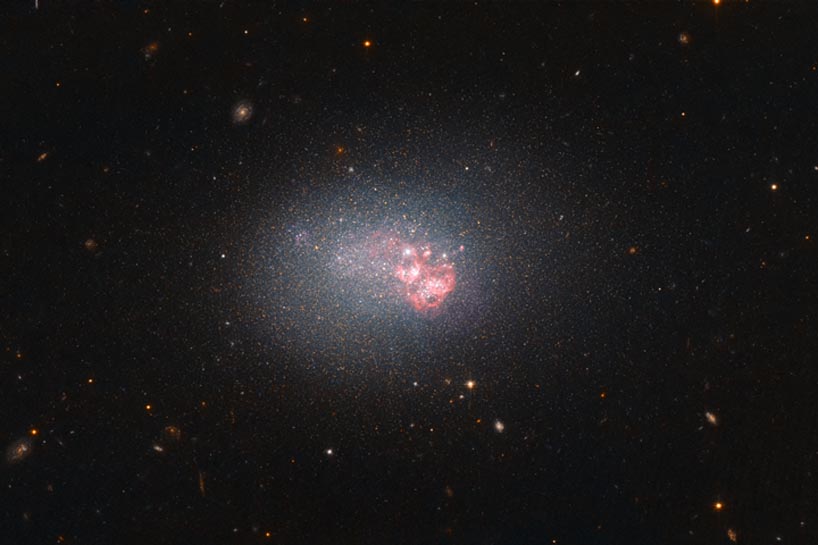
Dwarf galaxy
RA 5h 27m 5.95s Dec -20° 40' 41.40"
Lepus
21.8 million light years
3.26 x 1.62 arcminutes
North is 105.3° left of vertical
ESA/Hubble & NASA
October 9, 2017
ABOUT THIS IMAGE:
As far as galaxies are concerned, size can be deceptive. Some of the largest galaxies in the Universe are dormant, while some dwarf galaxies, such as ESO 553-46 imaged here by the NASA/ESA Hubble Space Telescope, can produce stars at a hair-raising rate. In fact, ESO 553-46 has one of the highest rates of star formation of the 1000 or so galaxies nearest to the Milky Way. No mean feat for such a diminutive galaxy!
Clusters of young, hot stars are speckling the galaxy, burning with a fierce blue glow. The intense radiation they produce also causes surrounding gas to light up, which is bright red in this image. The small mass and distinctive colouring of galaxies of this type prompted astronomers to classify them, appropriately, as blue compact dwarfs (BCD).
Lacking the clear core and structure that many larger galaxies — such as the Milky Way — have, BCDs such as ESO 553-46 are composed of many large clusters of stars bound together by gravity. Their chemical makeup is interesting to astronomers, since they contain relatively little dust and few elements heavier than helium, which are produced in stars and distributed via supernova explosions. Such conditions are strikingly similar to those that existed in the early Universe, when the first galaxies were beginning to form.